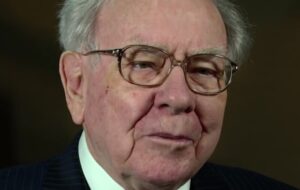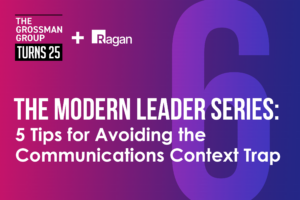It’s time to stop calling surface-level engagement thought leadership
Participation and visibility are not enough; leaders must strive for deeper, strategic contributions that drive real change.

Erin A. Hennessy is executive vice president, and Kristine Maloney is vice president at TVP Communications, a national communications and leadership agency solely focused on higher education.
Thought leadership is having a moment. Everyone seems to be doing it (or say they’re doing it). C-suite executives are reporting spending more time reading thought leadership, and say they’re noticing big increases in the amount of thought leadership content available. Firms like Weber Shandwick are investing in newly created roles specifically designed to enhance “executive visibility and leadership positioning.” And why not? Data from Edelman and LinkedIn present a strong argument for its efficacy in everything from increasing sales to building trust and enhancing reputation.
But as the practice of thought leadership has become more commonplace across industries and roles, the term itself has become an amorphous buzzword, encompassing everything from truly groundbreaking ideas to promotional puff pieces. The reality is, true thought leadership often takes a backseat to easier and less time-consuming work like pay-to-play tactics and superficial social media posts. But these approaches just masquerade as meaningful contributions to industry discourse. And, in fact, without some substance behind them, they could do more to hurt reputations than help. We’re overdue for a recalibration that centers on the essence of what thought leadership was intended to be: engagement that drives conversations, ideas and change within an industry.
This may be easier said than done.
For one thing, expectations for leaders are high. Everyone has access to multiple platforms to share their thoughts, so the assumption is our leaders will participate. In theory, this makes sense; in practice, that reasoning is risky. Just because “everyone is doing it” isn’t always a good reason to jump on board. If there aren’t enough resources (including time) to invest in strategic thought leadership, or if a leader doesn’t have something meaningful to say, creating content for content’s sake can have the opposite of the intended effect.
Meaningful engagement in thought leadership comes with other risks as well. It’s a challenging time for anyone to be wading into public discourse, particularly with the extreme polarization and politicization that has infiltrated many industries and sectors. It may feel safer for leaders, and by extension, their organizations to either not engage at all or to engage superficially. We see this manifest in many ways — a social media post about attending a celebratory organizational event, or the “op-ed” draft that is more of a summary of organizational accomplishments. These are not inherently bad things for a leader to share. In fact, they’re good and worthwhile activities. But they do little to advance the industry.
We also need our leaders to be OK with some level of vulnerability it is required to make a meaningful impact. There are safe boundaries within which to do this work. Most industries shouldn’t be weighing in on political issues, for example. (Higher education, the industry in which we work, regularly wrestles with this exact challenge as students, faculty, staff, alumni, donors and elected officials all chime in with vastly different perspectives on the issue du jour.)
But leaders need to be willing to engage in big conversations, even ones that may be uncomfortable. They need to be able to look beyond their own organizations, at their industry and at their industry’s role in society. They must be able to not only demonstrate familiarity with industry trends and challenges, but also be able to talk about what those trends mean and why they matter. That is where real change begins to take shape. Staying focused internally may help leaders avoid criticism, but it can also stifle innovation.
This isn’t to say leaders should disregard their internal audiences or their organizational goals, achievements, and challenges. But we need to draw clear lines between thought leadership and internal communications. If leaders keep a laser focus only on their own institutions, they’re surrounded by those in the same space and mindset as themselves. The exposure to colleagues and institutions beyond their immediate surroundings pushes leaders to exchange ideas, to consider and articulate exactly what differentiates them from others, and to learn from each other to keep the industry moving forward.
Before jumping in, it’s essential for leaders to be intentional in thinking about their participation and engagement. Strong thought leadership strategy requires an honest assessment of personal and organizational readiness to engage and acknowledgement of limitations for both. It can be difficult to recognize blind spots and areas for growth. But those areas of development and support can be built into a long-term strategy for thought leadership. And connecting with other industry leaders and following their work can also provide invaluable insight — yet another reason broadening beyond the walls of an individual institution is essential for leaders.
It’s also unrealistic to expect to engage without drawing criticism from some constituents and leaders need to brace themselves for that. An additional complication is that leaders’ identities are often conflated with that of their organizations and so any critiques or backlash can feel personal. Thick skin is a requirement for most leadership positions. But at the same time, a level of personal connection can be invaluable as a way into tackling a specific issue or topic and that vulnerability can be intimidating.
Effective thought leadership requires strategic, high-level contributions from leaders and a willingness to look beyond a specific institution or organization and address industry. This means leaders must possess a true understanding of the scope thought leadership requires and acknowledgement of the level at which they should be addressing issues—they cannot do this in isolation. Industries are comprised of such interconnected landscapes and our leaders must be engaged and aware to participate. A lack of familiarity and engagement could portend peril for not only an institution but also for an industry and for society: if no leaders are reaching beyond the confines of their organizations, how can they truly thrive, or even merely survive?






